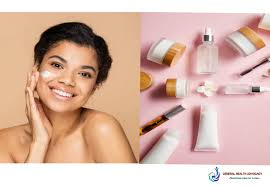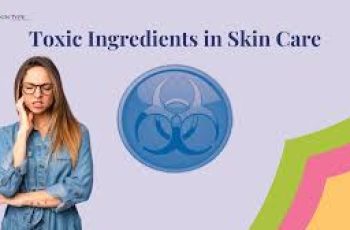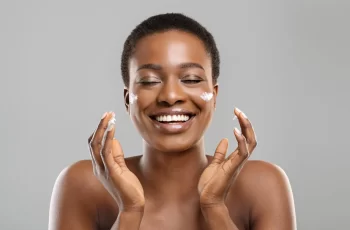Preventing adverse reactions to skincare products
We have all been there: on payday, we treat ourselves with a new skincare product. The joy is overwhelming, but then you realize that the product is not for you and you develop adverse skin reactions over time or perhaps immediately after use.
You may wonder why this happens and may think it is your own fault, but surprisingly, there are several reasons for these reactions, which we will now share with you.
What causes skin reactions to products?
1. Using products that are not suitable for your skin type – The most common problem is using products that are not suitable for your skin type. For example, if you have a dry skin type, using oil-controlling, oil-free formulas can cause your skin to become dry, tight, and sometimes even red. The same is true for oily skin types who use heavy creams that clog their pores and cause breakouts. It is best to fully understand your skin type before purchasing skincare products.
Allergies to formula ingredients – Another common problem is allergies to specific ingredients in a product’s formula. This reaction is individual, has to do with your skin, and does not mean that the product itself is poorly manufactured. This also doesn’t mean the more money you spend on a product, the better, as allergies to an ingredient or mixture of ingredients can still be present on the skin. An easy way to find out which ingredient might be the culprit is to compare the ingredient list to the product you already use to check for differences. If you have further concerns, a visit to a dermatologist may also be helpful.
Using a facial scrub that is too harsh for the skin – Some people react to facial scrubs by causing redness and sometimes minor nicks and cuts on the skin. If this happens, stop using the product immediately. Facial scrubs are made in a variety of ways, many of which use natural sources such as fruit kernels and nut shells. They are great for removing layers of dead skin cells as well as any dirt and grime. They can have sharp, jagged pieces that can damage the skin. White pumice is a safer option as the particles are smooth and gentler on the skin.
Using strong products too often – When it comes to anti-aging, we sometimes go overboard with strong products. Retinol is an ingredient that can often cause a lot of problems. If you don’t gradually incorporate it into your skin care routine, reactions such as redness, burning sensations, and flaking can occur. To prevent this reaction, you should use this product once a week in the evening. Then increase your skin’s exposure to this powerful product over time. This method can also be used with other ingredients like vitamin C and salicylic acid.
The product may be poorly formulated – Formulation is everything in skincare products, and using a product with too many irritating, skin-resurfacing, heavily scented ingredients can cause a number of problems. You may find that you start out great with the product, but over time, a skin reaction may develop. While scented skincare products are great to use, using too many of them can have adverse effects on the skin, causing dryness, redness, and pain.
Finally, your skin may simply be allergic – some people can easily tell that their skin is allergic, while for others, it may come and go, sometimes causing problems and sometimes not. If you feel your skin is allergic, it’s best to do a patch test 24 hours before using any product, especially before using it all over your face.
How to Prevent Unwanted Skin Reactions
Here are some tips to prevent adverse reactions to skincare products:
Do the following:
Take the time to understand your skin type and choose products that contain the right combination of ingredients to nourish and benefit your skin.
Write down the types of reactions you notice when using new skincare products. Over time, you will be able to identify which ingredients are not suitable for your skin.
Slowly introduce powerful ingredients like AHAs, BHAs, and retinols into your routine. This gives your skin enough time to adjust to it without any reactions.
Do a patch test for at least 24 hours on any new product to make sure it is safe to use on all of your skin.
Try to self-examine your daily habits to find out which products may be causing a reaction. First, don’t use a cleanser, then a serum, then a moisturizer, etc. This will make it clear which products may be causing the problem.
Don’t do the following:
Don’t focus too much on the price of the product. The more expensive the product, the higher the price, which is best because it still may contain ingredients you are allergic to.
Don’t forget to check that your daily SPF is not causing any reactions.
Don’t panic if you suddenly have an allergy to a product you have been using for a while, sometimes the skin just needs a change.
Don’t continue to use something that caused a reaction based solely on other people’s reviews or results.
Preventing adverse reactions to skincare products is not easy. It takes a lot of effort and time to find the right products and formulas that will benefit you and give you the skin you’ve always desired. Similar to a cake recipe, you need to combine the right ingredients to create a masterpiece!
DQH Can I use salicylic acid first and then vitamin C?
It’s easy to create a skincare routine, but knowing how to use it is another thing entirely. In most cases, if you’re not getting the desired skin results, it could be due to the layering of conflicting ingredients. So, is it possible that salicylic acid and vitamin C are such ingredients? Or are these active ingredients the duo that’s been missing from your skincare routine? If you want answers, stick around because today we are going to explain the benefits of salicylic acid and vitamin C and how they can be used in your daily life.
What are the benefits of salicylic acid for skin?
Salicylic acid is one of the most commonly used beta hydroxy acids and is favored by many people with oily, acne-prone skin. This acid is derived from willow bark, and unlike its water-soluble relatives (called alpha-hydroxy acids), salicylic acid is oil-soluble, which means it can penetrate deeper into the lower layers of the skin. Once it reaches the lower layers, it can help unclog pores of excess sebum, dirt, bacteria, debris, and impurities. This results in clearer skin tones and greater definition.
Not only does salicylic acid benefit the underlying layers, but the outer surface of the skin benefits as well. When applied to the skin, salicylic acid removes the buildup of dead skin cells. This is accomplished by breaking the bonds that hold dead cells to the surface. Over time, this can cause the complexion to look dull and prone to acne, blackheads, and other blemishes.
If you’d like to learn more about salicylic acid and how it can improve your skin, check out this dedicated blog post from a beauty insider.
What are the benefits of vitamin C for skin?
Vitamin C is considered one of the most powerful antioxidants, which means it is very effective at fighting free radicals and preventing them from causing further skin damage. Examples of free radicals include pollution, central heating, UV rays and harsh climate. They attack proteins, fats and cell membranes as soon as they come into contact with the skin, causing signs of premature aging such as fine lines and wrinkles as well as hyperpigmentation, flaky patches of skin and loss of elasticity.
Many people usually prefer to use vitamin C in their morning routine as this ingredient gives the complexion a radiant glow. You’ll also find that vitamin C can target areas of hyperpigmentation, plumping the skin and reducing the appearance of fine lines and wrinkles.
The thing about vitamin C is that there are a lot of outdated studies going back to the 1950s that describe vitamin C as an unstable skin component. Thanks to improvements in modern technology, this is no longer the case as all products now contain a stable form of vitamin C.
Visit The Beauty Insider to learn more about vitamin C. So please check out our blog post.
Can I use salicylic acid first and then vitamin C?
Yes, you absolutely can. In fact, it’s thought that using salicylic acid before using vitamin C ensures it penetrates faster and works faster.
This is an efficient way to utilize two power sources, and the reason has to do with pH. For example, the skin’s natural pH is about 4.7, making it slightly acidic. Salicylic acid and vitamin C are also both acidic, and you’ll find that vitamin C is absorbed quickly into the skin. Therefore, using salicylic acid beforehand can increase the acidity of the skin and allow vitamin C to penetrate into the skin faster.
While this is considered an effective way to combine two powerful ingredients, you need to be aware of your skin type and how it reacts to certain active ingredients. Even people with perfect, normal skin can experience skin sensitivity and irritation. Therefore, always consult a doctor or dermatologist before using any new products on your skin.
It’s also important to follow skin application rules. In this case, you need to use the product correctly to ensure you get the best results for your skin. If you’re not sure what I mean, the basic rule for skin is to start with the thinnest consistency and work your way up to the thickest consistency. This prevents a barrier from forming on the surface, preventing other active ingredients from penetrating the skin.
Can I use salicylic acid at night and vitamin C in the morning?
Yes, absolutely, this is considered the most effective way to get returns without any adverse side effects. This is because there is enough time between applications to ensure that the skin’s pH levels return to balance.
You’ll also find that Vitamin C is rich in antioxidants and is perfect for use in the morning to ensure your skin is protected and looking its healthiest. Due to the small size of salicylic acid molecules, it is an acid that is able to reach the deepest parts of the skin. While this is effective at keeping skin clear, it also increases the risk of irritation and photosensitivity. Therefore, many people prefer to use powerful BHAs in their evening routine without exposure to UV rays, pollution, or harsh weather.
Warning: If you avoid using sunscreen every day, none of these ingredients will do what your skin needs. The combination of chemical peels and powerful ingredients increases the risk of further damage to the skin’s surface. Use SPF 50 every day to keep your skin protected and your lipid barrier healthy, even on cloudy days, keeping your skin in top condition.



